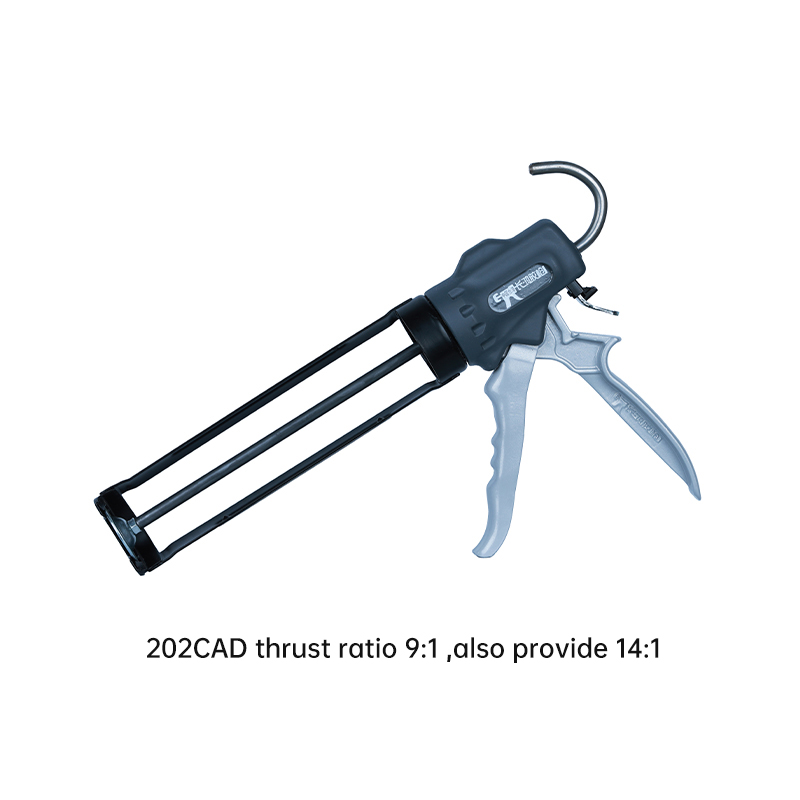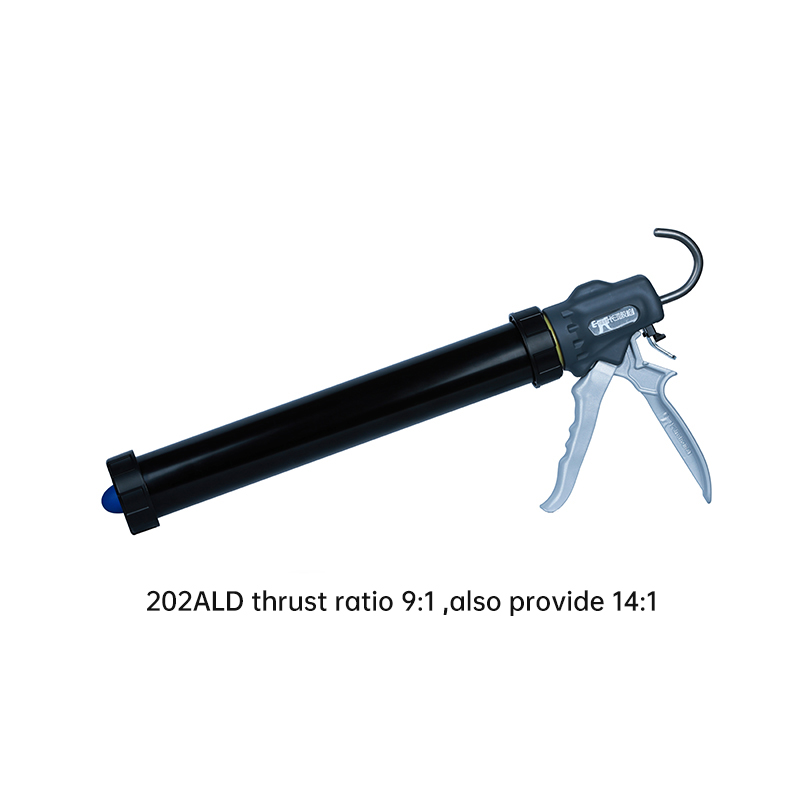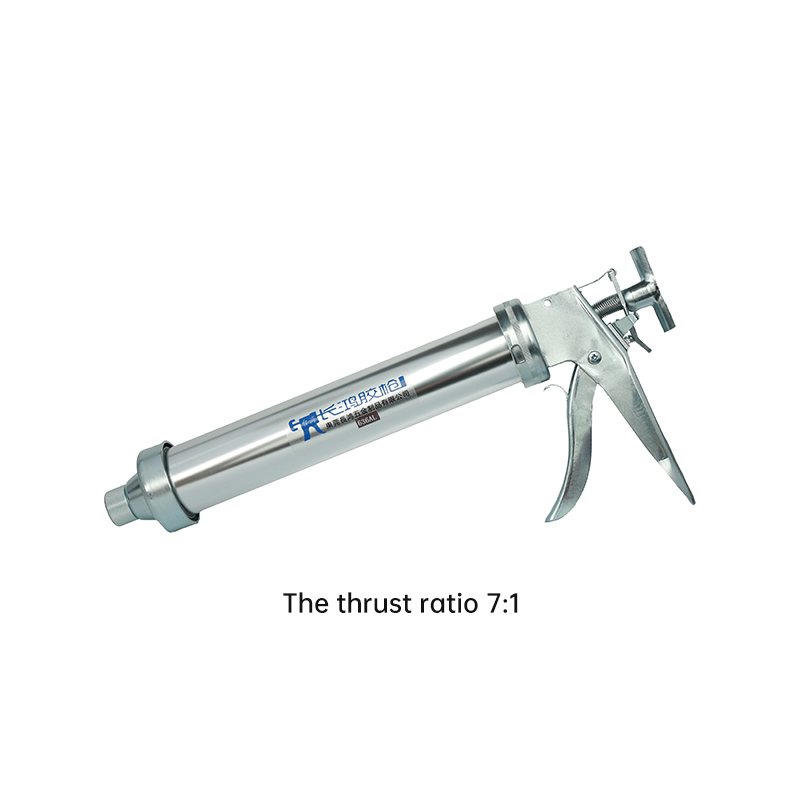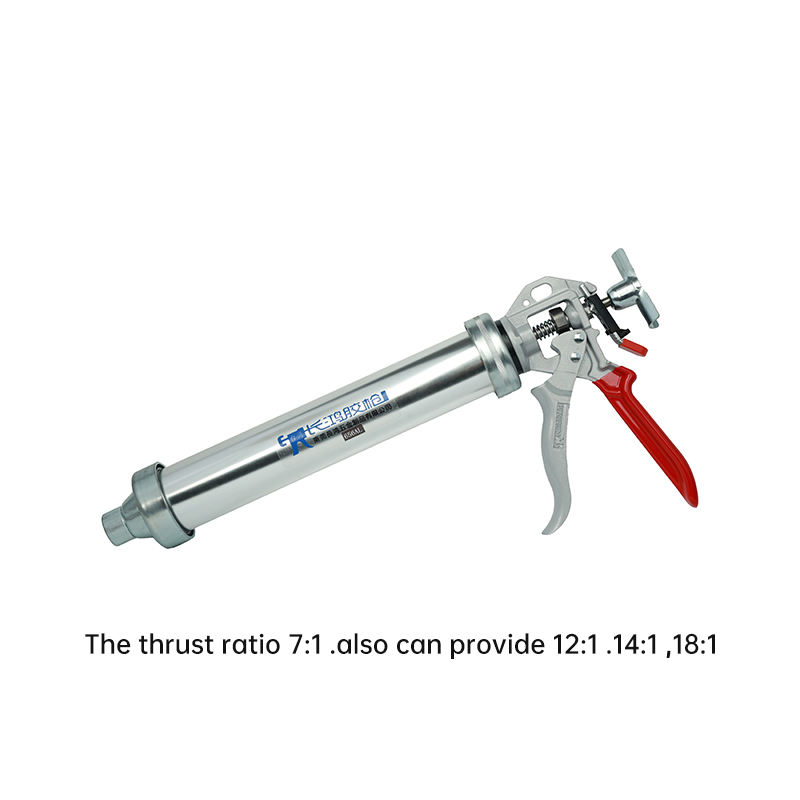Is the caulking gun dispensing sealant evenly and consistently?
Release Time : 2025-11-04
As the core tool for manually applying cartridge sealant, the evenness and consistency of the sealant dispensing from the caulking gun directly determines the quality and efficiency of the application. Whether it's DIY home repairs, door and window sealing, or professional building caulking, a smooth, continuous, and consistent sealant line not only affects aesthetics but also the durability of the seal and its waterproofing effect. Even and consistent sealant dispensing is not solely dependent on manual control but is the result of the combined efforts of tool design, material selection, and ergonomics.
The even dispensing of the caulking gun primarily relies on the linear transmission performance of the actuator system. A high-quality caulking gun uses a high-precision metal actuator and guide structure to ensure that the thrust is smoothly and without jerking when the trigger is pulled, transmitted to the sealant cartridge piston. There is no gap or misalignment between the actuator and piston, preventing inconsistent sealant dispensing due to shaking or jamming. Some high-end designs incorporate gear or lever-based force-multiplying mechanisms. This reduces operator hand effort while transforming minute hand movements into more precise pushing displacements, enabling accurate control of the adhesive volume and ensuring the adhesive is extruded from the nozzle at a constant speed.
The way the adhesive cartridge is secured is equally crucial. A reliable clamping structure ensures the cartridge does not rotate or shift under pressure, keeping the piston always vertically advancing and preventing premature overflow or air bubbles caused by bias pressure. A tight fit between the cartridge tail and the push rod head prevents idle travel or slippage, ensuring every trigger action translates into an effective adhesive dispensing action. This stable fit is the foundation for continuous, uninterrupted adhesive dispensing.
The design and compatibility of the nozzle also affect dispensing stability. Standard nozzles have a smooth, burr-free outlet and a uniform inner diameter, allowing the adhesive to flow unimpeded during extrusion. Users can change nozzles of different diameters according to the seam width, using appropriate shear angles to achieve a perfect fit between the adhesive line and the seam. The tight connection between the nozzle and the cartridge outlet prevents leakage or seepage, ensuring all adhesive flows out along the pre-designed path, resulting in clean, crisp lines.
The user experience is also crucial for stable adhesive dispensing. An ergonomic handle design allows for a natural grip and sustained application of force, reducing hand fatigue that can cause tremors or uneven application. Anti-slip textures or soft rubber coating enhance grip stability, maintaining precise control even with adhesive residue or sweat on the hands. A retraction release button allows for easy pressure release during pauses, preventing residual pressure from causing further leakage, thus avoiding waste and contamination.
Furthermore, the overall rigidity of the caulking gun is paramount. The main structure utilizes high-strength engineering plastics or a metal frame, ensuring it remains undeformed and unbent even during prolonged use or with high-resistance adhesives (such as high-viscosity silicone sealants). Insufficient rigidity can lead to elastic deformation under pressure, causing discrepancies between the push rod stroke and the actual dispensing volume, disrupting uniformity.
Ultimately, a caulking gun that dispenses glue evenly and consistently is a testament to attention to detail and craftsmanship. It transforms simple manual movements into controllable and reliable application, allowing users to easily create professional-grade glue lines without relying on experience or repeated practice. This stability not only improves efficiency but also imbues each caulking operation with precision and ease, transforming sealing from a tedious physical task into a smooth and reassuring experience.
The even dispensing of the caulking gun primarily relies on the linear transmission performance of the actuator system. A high-quality caulking gun uses a high-precision metal actuator and guide structure to ensure that the thrust is smoothly and without jerking when the trigger is pulled, transmitted to the sealant cartridge piston. There is no gap or misalignment between the actuator and piston, preventing inconsistent sealant dispensing due to shaking or jamming. Some high-end designs incorporate gear or lever-based force-multiplying mechanisms. This reduces operator hand effort while transforming minute hand movements into more precise pushing displacements, enabling accurate control of the adhesive volume and ensuring the adhesive is extruded from the nozzle at a constant speed.
The way the adhesive cartridge is secured is equally crucial. A reliable clamping structure ensures the cartridge does not rotate or shift under pressure, keeping the piston always vertically advancing and preventing premature overflow or air bubbles caused by bias pressure. A tight fit between the cartridge tail and the push rod head prevents idle travel or slippage, ensuring every trigger action translates into an effective adhesive dispensing action. This stable fit is the foundation for continuous, uninterrupted adhesive dispensing.
The design and compatibility of the nozzle also affect dispensing stability. Standard nozzles have a smooth, burr-free outlet and a uniform inner diameter, allowing the adhesive to flow unimpeded during extrusion. Users can change nozzles of different diameters according to the seam width, using appropriate shear angles to achieve a perfect fit between the adhesive line and the seam. The tight connection between the nozzle and the cartridge outlet prevents leakage or seepage, ensuring all adhesive flows out along the pre-designed path, resulting in clean, crisp lines.
The user experience is also crucial for stable adhesive dispensing. An ergonomic handle design allows for a natural grip and sustained application of force, reducing hand fatigue that can cause tremors or uneven application. Anti-slip textures or soft rubber coating enhance grip stability, maintaining precise control even with adhesive residue or sweat on the hands. A retraction release button allows for easy pressure release during pauses, preventing residual pressure from causing further leakage, thus avoiding waste and contamination.
Furthermore, the overall rigidity of the caulking gun is paramount. The main structure utilizes high-strength engineering plastics or a metal frame, ensuring it remains undeformed and unbent even during prolonged use or with high-resistance adhesives (such as high-viscosity silicone sealants). Insufficient rigidity can lead to elastic deformation under pressure, causing discrepancies between the push rod stroke and the actual dispensing volume, disrupting uniformity.
Ultimately, a caulking gun that dispenses glue evenly and consistently is a testament to attention to detail and craftsmanship. It transforms simple manual movements into controllable and reliable application, allowing users to easily create professional-grade glue lines without relying on experience or repeated practice. This stability not only improves efficiency but also imbues each caulking operation with precision and ease, transforming sealing from a tedious physical task into a smooth and reassuring experience.







